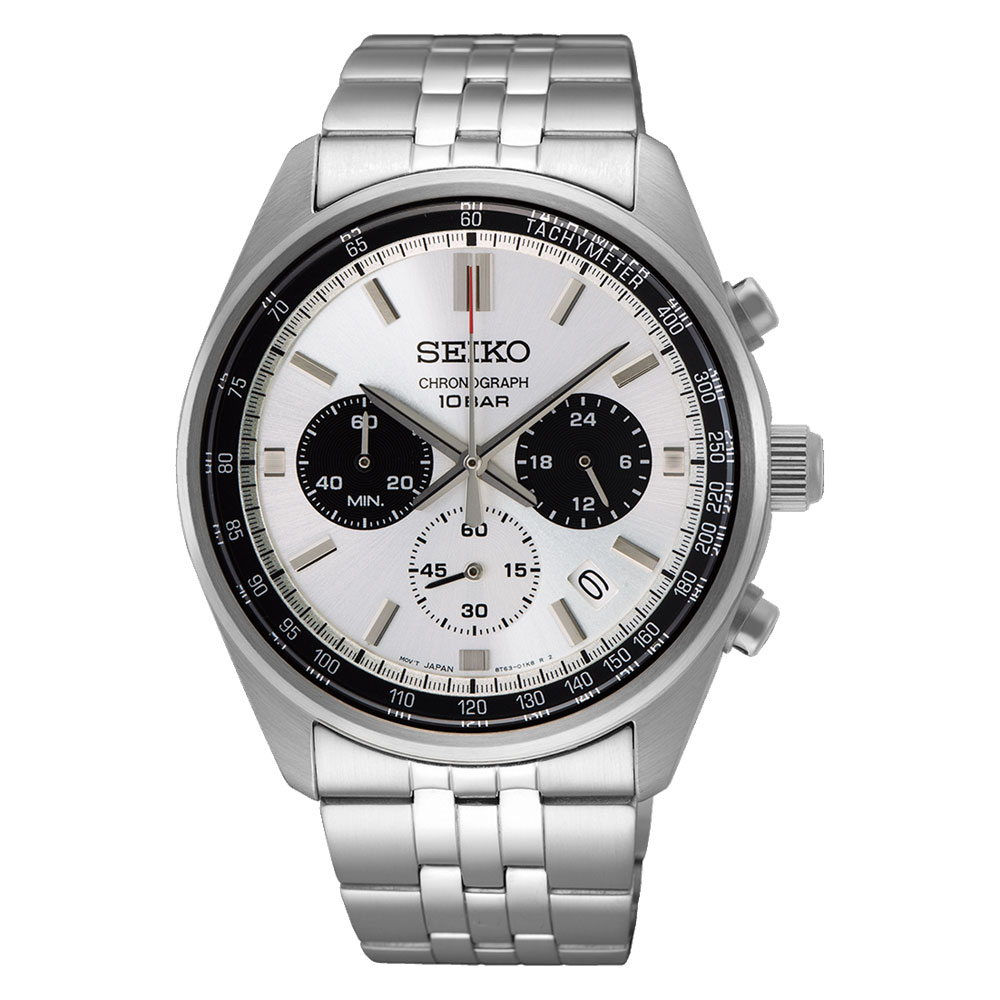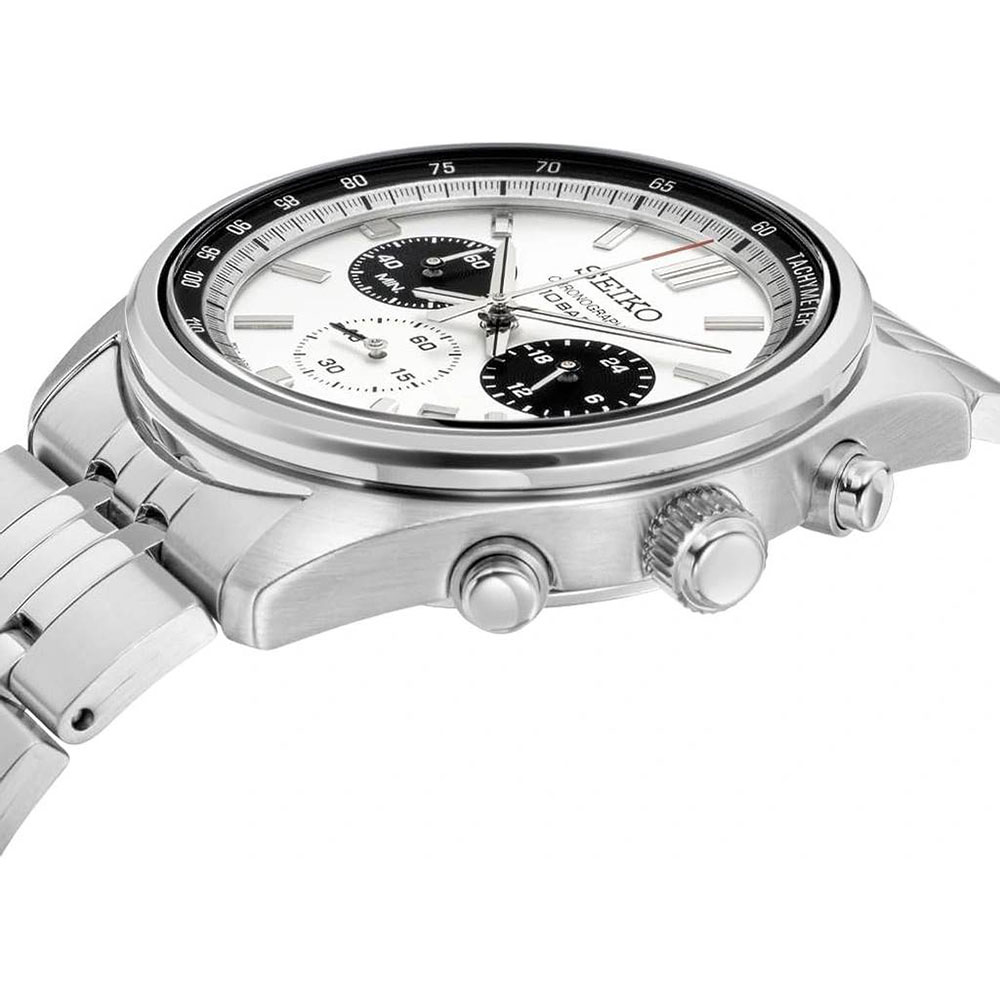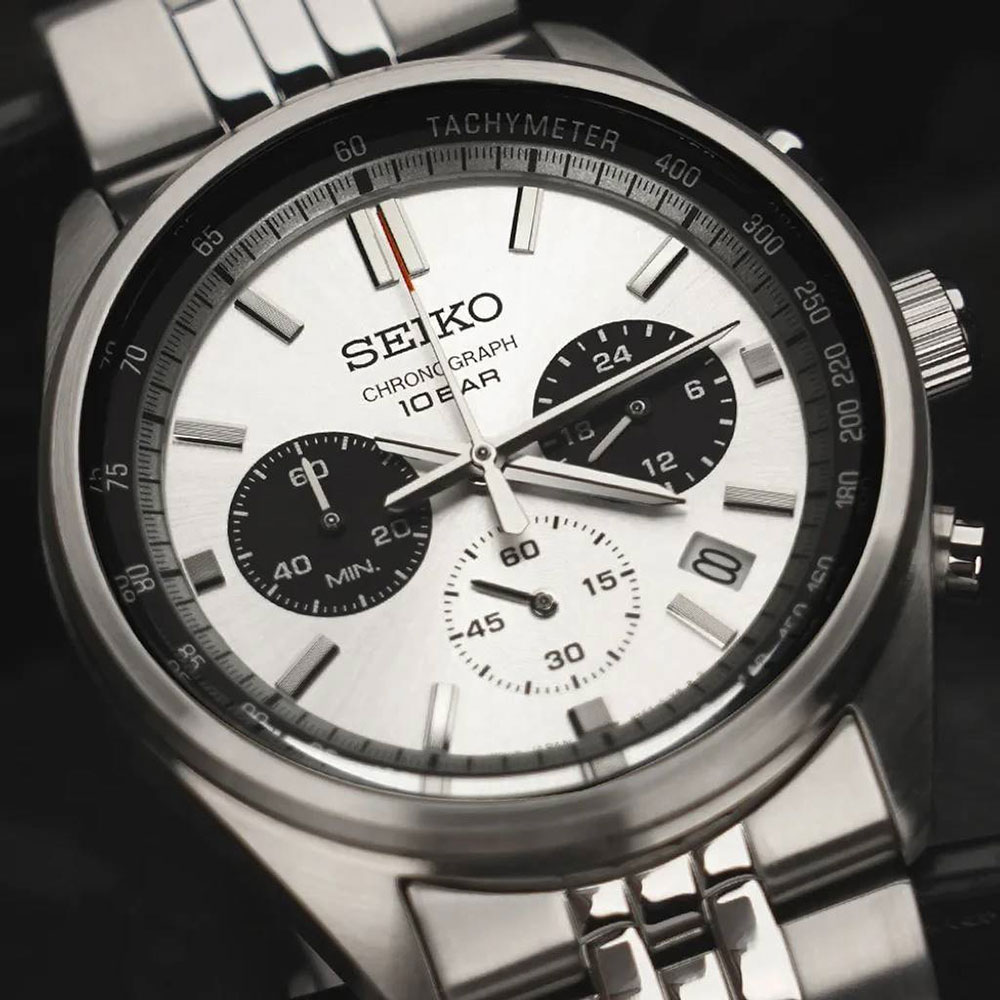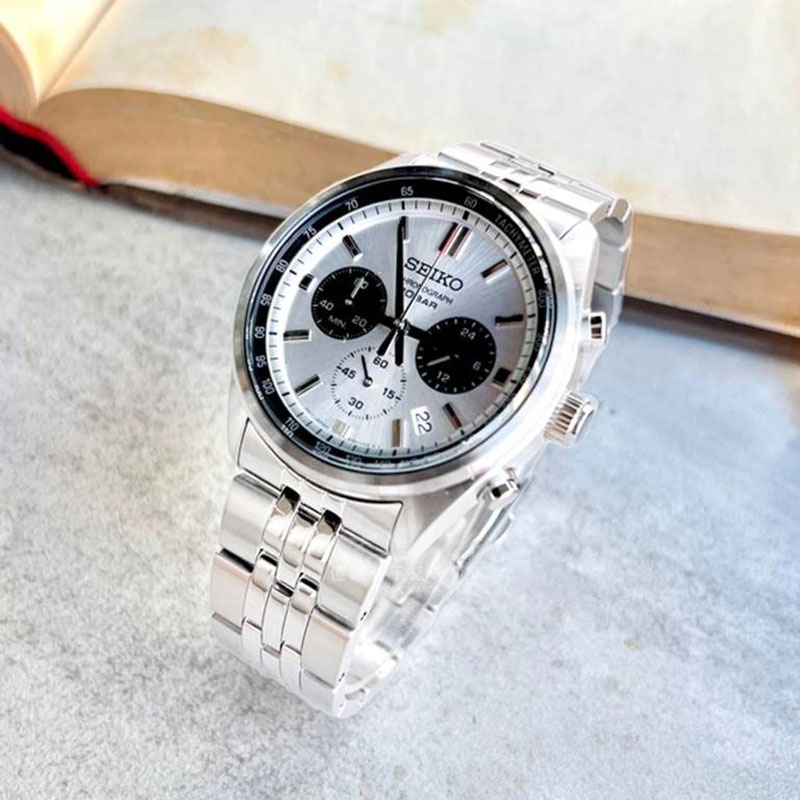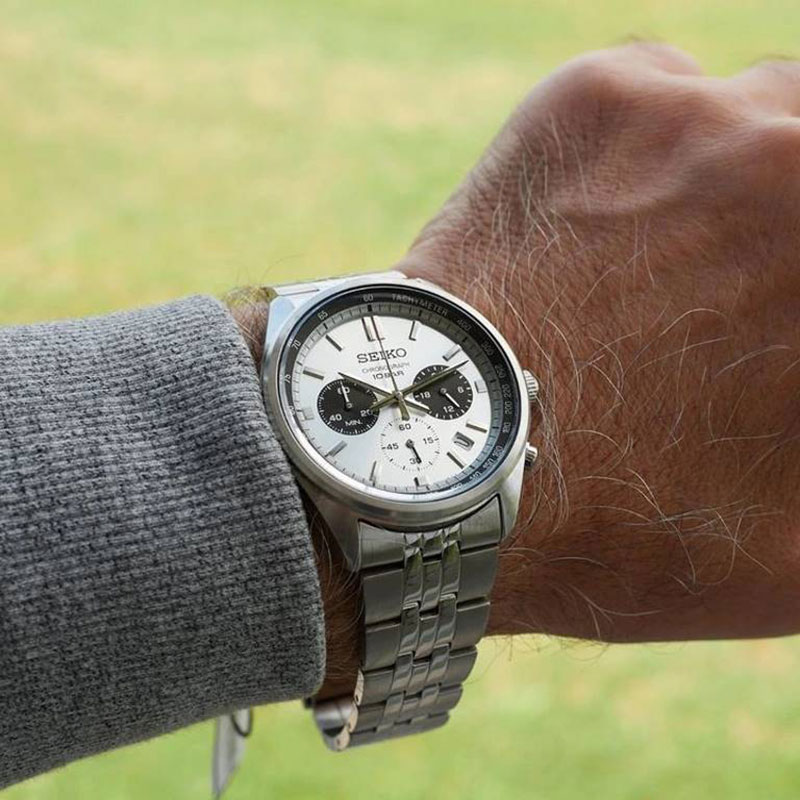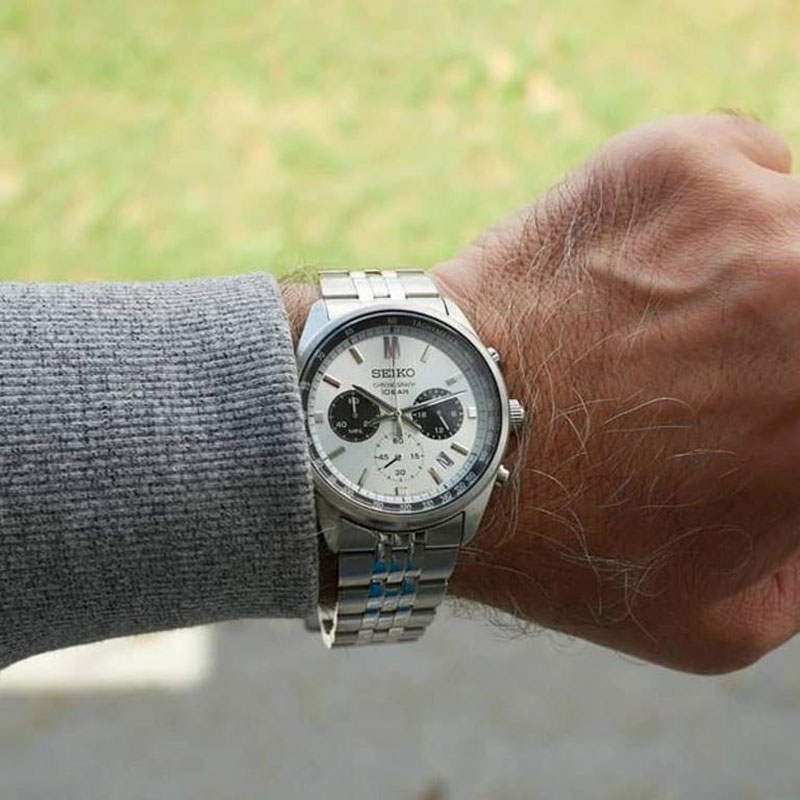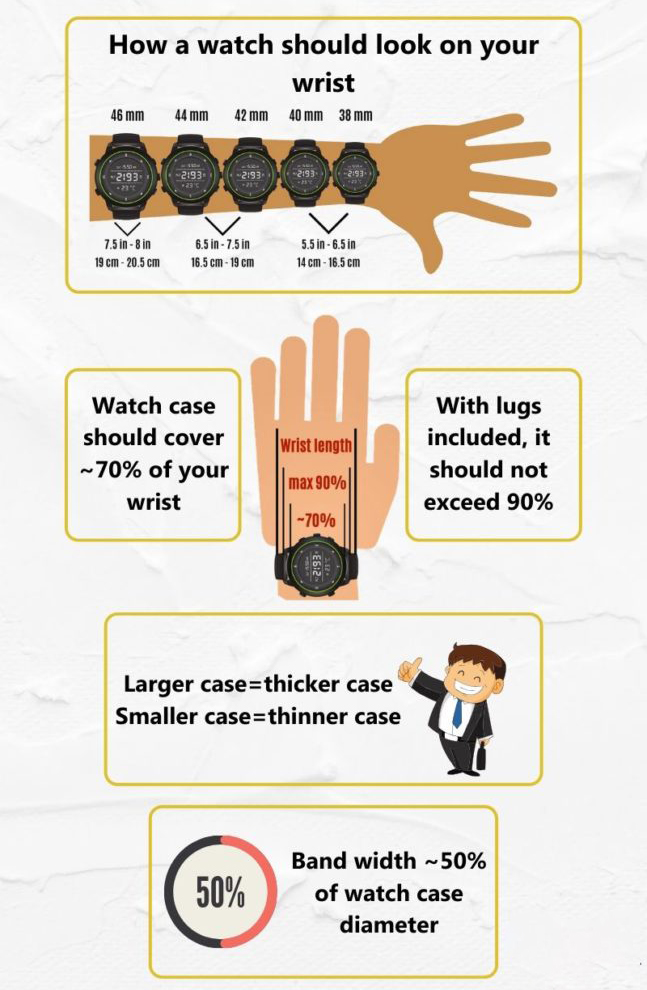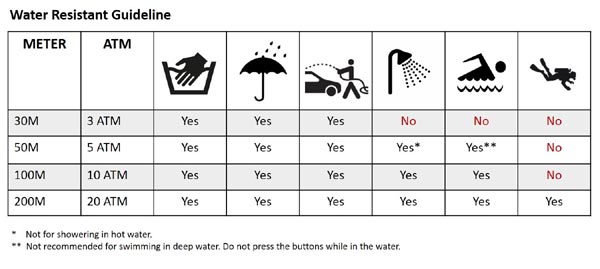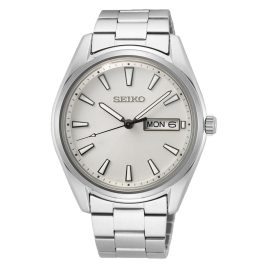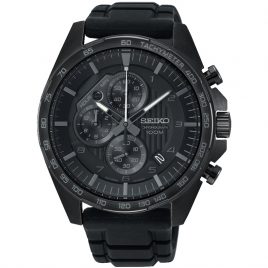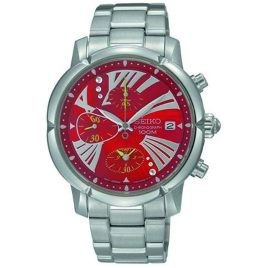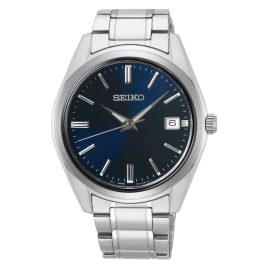Description
SEIKO QUARTZ Chronograph SSB425 Specifications
| Feature |
| ||
|---|---|---|---|
| Driving system | Quartz | ||
| Caliber Number | 8T63 | ||
| Case material | Stainless steel | ||
| Case back | Solid | ||
| Band type | Bracelet | ||
| Band material | Stainless steel | ||
| Band color | Silver tone | ||
| Band width | 22 mm | ||
| Clasp | Three-fold clasp with push button release | ||
| Dial color | Silver | ||
| Glass material | Hardlex crystal | ||
| Hands | Silver and grey (hour, minutes) with red colored tipped second hand | ||
| Second markers | Minutes markers around the outer rim | ||
| Dial markers | Silver tone indexes | ||
| Sub dials | Three – 60 second, 60 minute and 24 hour | ||
| Bezel | Fixed black stainless steel | ||
| Crown | Screw down | ||
| Calendar | Date display between 4 and 5 o’clock position | ||
| Function | Chronograph, tachymeter scale, date, hour, minute, second | ||
| Accuracy | ± 15 seconds per month | ||
| Drive duration | Approximately 3 years | ||
| Water resistance | 10 bar water resistance (100 meters / 330 feet) | ||
| Size | Diameter 41.5 mm x Thickness 12.1 mm | ||
| Lug to lug | 46.5 mm | ||
| Weight | 133 g |
SEIKO QUARTZ Chronograph SSB425 Features
From the Essentials Collection. Inspired by motor sports, this dynamic chronograph features a silver dial with bold, highly legible black sub dials at 3 and 9 o’clock styled to suggest a racecar instrument panel. Framed by a black tachymeter outer ring, the dial also offers a date calendar as well as a 24-hour sub dial. The chronograph provides measurement of up to 60 minutes of elapsed time in 1/5-second increments. Crafted of stainless steel with mirror and hairline finish and tri-fold push button release clasp. 10 bar, 100M Water Resistant.
- Calendar date display
- Tachymeter
- 24-hour hand
- Equipped with a small seconds hand
- Chronograph up to 60 minutes in 1/5 second increments
- Stainless steel case
- Stainless steel bracelet
- Screw case back
SEIKO QUARTZ Chronograph SSB425 History
The company was founded in 1881, when Kintarō Hattori opened a watch and jewelry shop called “K. Hattori” (服部時計店 Hattori Tokeiten) in the Ginza area of Tokyo, Japan. Eleven years later, in 1892, he began to produce clocks under the name Seikosha (精工舎 Seikōsha), meaning roughly “House of Exquisite Workmanship”. According to Seiko’s official company history, titled “A Journey In Time: The Remarkable Story of Seiko” (2003), Seiko is a Japanese word meaning “exquisite” or “success” (“exquisite” is usually written 精巧 from Chinese jīngqiǎo, while the meaning “success” is usually written 成功 from Chinese chénggōng).
The first watches produced under the Seiko brand appeared in 1924. In 1969, Seiko introduced the Astron, the world’s first production quartz watch; when it was introduced, it cost the same as a medium-sized car. Seiko later went on to introduce the first quartz chronograph.
In the late 1980s, Seiko produced the first automatic quartz that combined the self-energizing attributes of an automatic watch with quartz accuracy. The watch is entirely powered by its movement in everyday wear. In 1991, to increase popularity, these watches were relaunched under the name Seiko Kinetic.
source : https://en.wikipedia.org/wiki/Seiko

